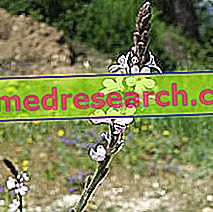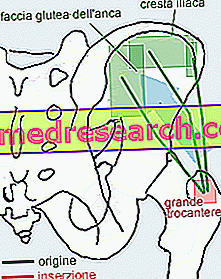
Scientific name
Verbena officinalis
Family
Verbenaceae
Origin
Europe
Used Parts
Drug consisting of the aerial parts
Chemical constituents
- Bitter iridoid glucosides (verbenaloside, verbenina);
- Glycosidic phenylpropanoids (verbascoside, cukovoside);
- Essential oil;
- Flavonoids;
- Polyphenols.
Verbena in Herbalist: Property of the Verbena
Verbena is one of the plants, called galactogogues, which in folk medicine find application to promote lactation; currently, however, it is used in decoction due to its mild tonic, antispasmodic, febrifuge and anti-inflammatory properties.
Biological activity
The use of verbena has not been approved for any type of therapeutic application. However, due to its iridoid glycoside content, it is not uncommon for this plant to be used as an astringent remedy.
The plant is also attributed analgesic, anti-inflammatory, antitussive and galactogogic properties.
Furthermore, interesting studies were carried out on the verbena to investigate the potential antitumor activities. From one of the research conducted on animals, it emerged that the verbena extract exerts an antineoplastic activity by inhibiting the proliferation of malignant cells, although the exact mechanism by which this occurs has not yet been fully clarified.
Another study, however, has shown that the essential oil of verbena is able to favor the triggering of the apoptotic mechanism in malignant cells of patients suffering from chronic lymphocytic leukemia. The main responsible for this activity appears to be the citral content in the essential oil of the plant and the mechanism by which apoptosis is induced appears to be related to the activation of pro-caspase 3, ie to the activation of one of the enzymes involved, in fact, in cellular apoptosis.
Another interesting study, on the other hand, has highlighted the promising neuroprotective properties exerted by the verbena extract, hypothesizing a possible future use in contrasting the neuronal degeneration that occurs in patients suffering from Alzheimer's disease.
However, despite all the encouraging results obtained, further and more in-depth clinical studies are needed before the use of verbena, or its extracts, can be approved for the aforementioned medical applications.
Verbena in folk medicine and homeopathy
In folk medicine, verbena is used internally for the treatment of multiple ailments, such as diseases of the respiratory tract (such as cough and asthma), pain and cramps, as well as a remedy for fatigue, agitation and digestive disorders.
In traditional medicine, verbena is also used externally to treat diseases of the mucous membranes of the oropharyngeal cavity, arthritis, bruises and rheumatism, and as a remedy to counteract skin itching.
In Chinese medicine, however, verbena is used to treat dysmenorrhoea, edema and even malaria and anthrax (anthrax).
Verbena is also used in homeopathic medicine. It can easily be found in the form of granules, oral drops or mother tincture with indications for the treatment of ecchymoses, convulsions and stress.
The amount of homeopathic remedy to be taken may vary from one patient to another, also depending on the type of preparation and the type of homeopathic dilution you intend to use.
Contraindications
Avoid use in case of hypersensitivity to one or more components. Furthermore, the use of verbena or its preparations is also contraindicated during pregnancy.
Pharmacological Interactions
- hormonal therapies;
- sedatives;
- drugs used to control blood pressure.



